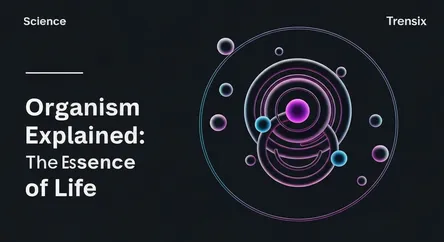Science
Organism Explained: The Essence of Life

Discover what defines an organism, from single-celled bacteria to complex humans, and why understanding them is crucial for science and our survival.
What is it?
An organism is an individual living being. This includes any animal, plant, fungus, bacterium, or protist on Earth. The core characteristics that define an organism are having an organized structure (made of one or more cells), the ability to react to stimuli, grow, adapt, reproduce, and maintain a stable internal condition called homeostasis. Ranging from microscopic single-celled bacteria to massive multicellular beings like blue whales, organisms represent every form of life. They are fundamentally distinct from non-living matter through these complex, coordinated life processes.
Why is it trending?
The concept of the organism is central to many critical scientific fields. With growing concerns about climate change and environmental health, the study of how organisms interact within ecosystems (biodiversity) is more important than ever. Furthermore, breakthroughs in genetics and medicine heavily rely on "model organisms" like fruit flies and mice. By studying these simpler life forms, scientists gain invaluable insights into human biology and disease, accelerating the development of new treatments and therapies. Systems biology is also exploring how the organism functions as a whole, integrated system, moving beyond just its individual genes.
How does it affect people?
Humans are organisms, and our existence is completely dependent on a vast web of other organisms. We rely on plants and animals for food, bacteria and fungi for creating medicines and decomposing waste, and entire ecosystems for clean air and water. The health of our planet is a direct reflection of the health of its organisms. Biodiversity loss directly threatens our food supplies, clean water, and can even lead to the emergence of new diseases. From the microbiome in our gut to the forests that regulate climate, our well-being is intrinsically linked to the organisms around us.